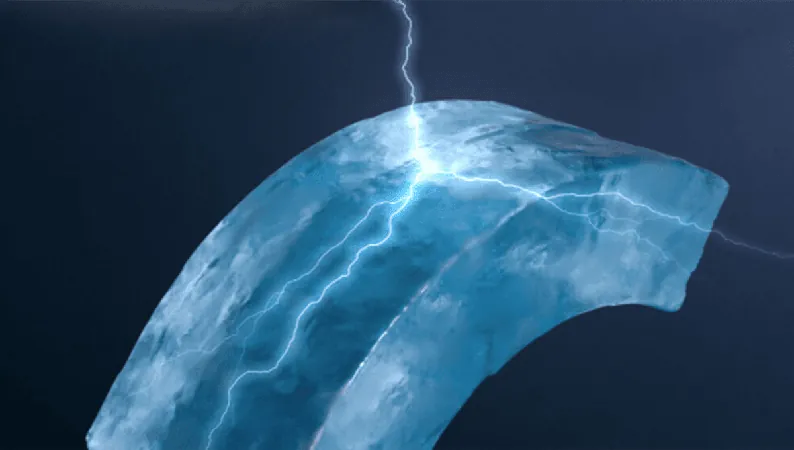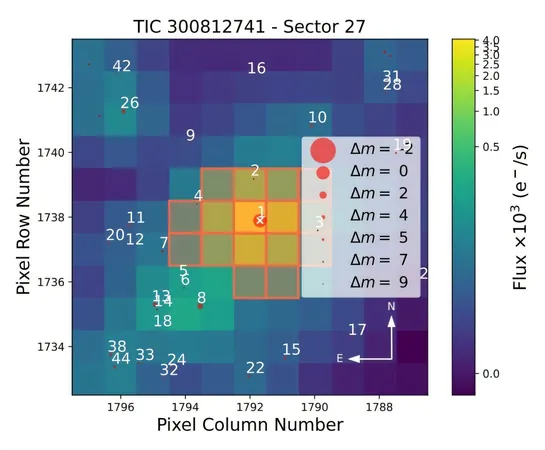
Bending Ice: The Shocking Discovery That Could Unravel the Secret of Lightning!
2025-09-04
Author: Mei
A Game-Changing Discovery in Ice Research
Ice is everywhere on our planet, playing a crucial role in both the environment and life itself. Even with countless studies performed, scientists are still uncovering surprising properties of this common yet complex substance.
The Piezoelectric Mystery of Ice
Traditionally, the most familiar form of ice—hexagonal ice, known as Ih—has been considered non-piezoelectric, meaning it doesn't generate electricity when mechanical stress is applied, unlike other materials such as crystals. Researchers from the Catalan Institute of Nanoscience and Nanotechnology (ICN2) have simplified this complex idea, attributing this to the arrangement of hydrogen atoms that disrupts the electric properties of the ice.
Ice Sparks Electricity: The Hidden Connection
Despite this understanding, a peculiar phenomenon has been observed: ice appears to generate electricity under stress in nature, contributing to the buildup of charge in clouds, which leads to awe-inspiring lightning. Recent experiments involving the bending of ice reveal the mechanism behind this electrifying behavior.
ICREA Professor Gustau Catalán, leading the research team, shared, "By bending a slab of ice placed between metal plates, we measured the resulting electric potential, mirroring what happens during ice-particle collisions in thunderstorms".
Flexoelectric Effect: A New Frontier in Ice Science
This groundbreaking study identifies the flexoelectric effect in ice, aligning it with materials like titanium dioxide, which are pivotal in technology like capacitors and sensors. This discovery provides valuable insights into how lightning could be triggered by electricity generated within ice clouds.
Ferroelectric Properties: Ice's Dual Power
Further investigations revealed that ice doesn't just flexoelectrically generate charge—it also displays ferroelectric characteristics at extremely low temperatures. Dr. Xin Wen from the research group explained, "At temperatures below -113°C, ice can develop natural electric polarization, akin to flipping the poles of a magnet with an electric field." This remarkable flexibility means ice has not one, but two potential ways to generate electricity—one at frigid temperatures and another as temperatures rise toward freezing.
The Future of Ice in Technology
Eager to delve deeper, the research team plans to explore the possibility of harnessing these properties to create advanced electronic devices that could utilize ice as a functional component, potentially revolutionizing how we think about materials in cold environments.


 Brasil (PT)
Brasil (PT)
 Canada (EN)
Canada (EN)
 Chile (ES)
Chile (ES)
 Česko (CS)
Česko (CS)
 대한민국 (KO)
대한민국 (KO)
 España (ES)
España (ES)
 France (FR)
France (FR)
 Hong Kong (EN)
Hong Kong (EN)
 Italia (IT)
Italia (IT)
 日本 (JA)
日本 (JA)
 Magyarország (HU)
Magyarország (HU)
 Norge (NO)
Norge (NO)
 Polska (PL)
Polska (PL)
 Schweiz (DE)
Schweiz (DE)
 Singapore (EN)
Singapore (EN)
 Sverige (SV)
Sverige (SV)
 Suomi (FI)
Suomi (FI)
 Türkiye (TR)
Türkiye (TR)
 الإمارات العربية المتحدة (AR)
الإمارات العربية المتحدة (AR)